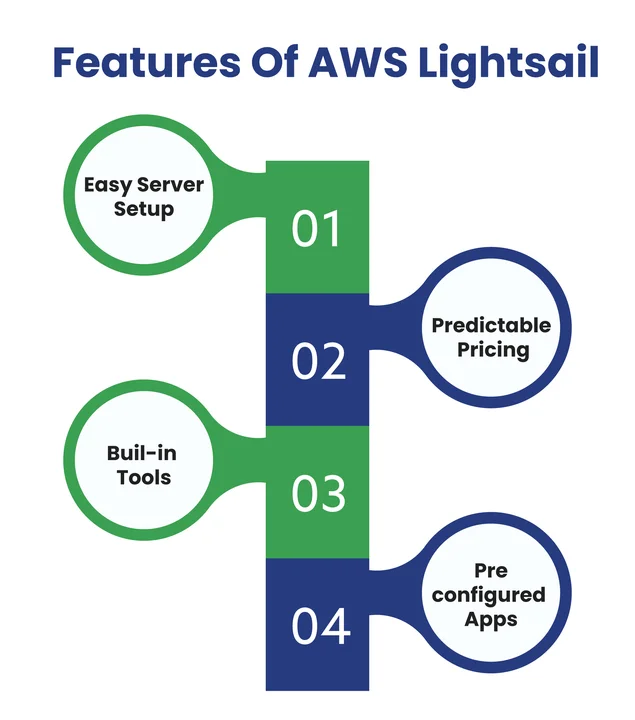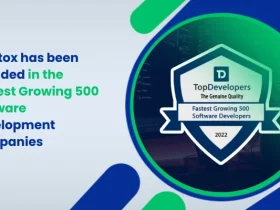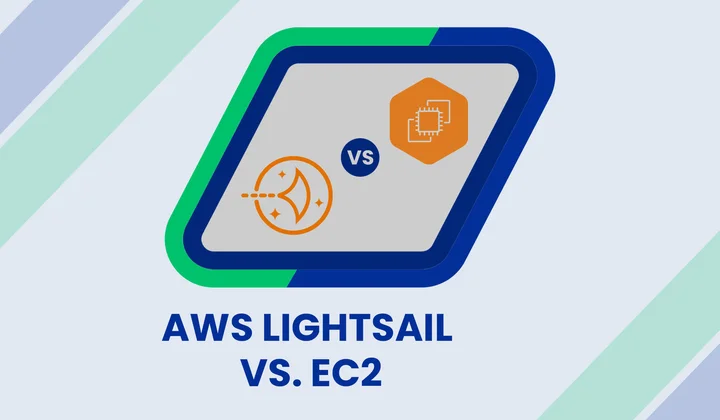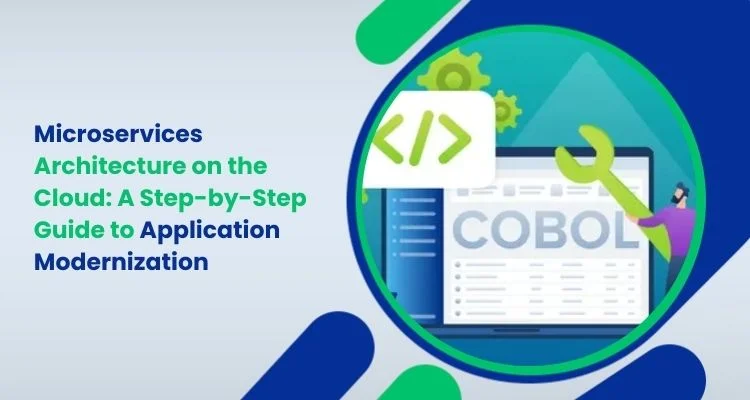Cloud computing can feel like a maze.
There are so many services, options, and pricing plans that even experienced developers sometimes pause and scratch their heads.
Two names you’ve probably come across are AWS Lightsail and AWS EC2. Both are popular, but they serve very different purposes. When you pick the right one, it can save you time, money, and frustration later on.
These differences can make a big impact on your project, especially in 2026 when workloads and traffic demands are higher than ever.
At its core, the choice comes down to simplicity versus flexibility. Lightsail gives you a ready-to-go server with predictable pricing, while EC2 offers full control and scalability, but it takes more setup and management.
And that’s exactly what we’ll do here: take a closer look at both, compare the two services side by side, and help you figure out which one fits your project best.
With that in mind, let’s look at Lightsail and see how it works.
How Does AWS Lightsail Work?
AWS Lightsail is a simpler way to host your projects in the cloud. It’s perfect for anyone who wants a virtual private server (VPS) without getting caught up in complicated setups. Think of it as a prepackaged server that’s ready to go and easy to manage.
Table of Contents
In 2026, small websites or MVP apps can still benefit from Lightsail’s simplicity, especially when you want predictable costs and minimal setup.
Significant Features Of AWS Lightsail
Lightsail comes with several handy features that make getting started straightforward. You get everything you need to launch a project without worrying about the tricky setup stuff.

Some of the features that make it so easy to use include:
- Simplified server setup: Lightsail provides ready-made virtual servers, so you can launch a website or app without worrying about configurations.
- Predictable pricing: Plans are simple and clear, starting as low as $5–$10 per month.
- Built-in tools: Networking, storage, DNS management, and basic firewalls are included. You can focus on your project instead of managing infrastructure.
- Preconfigured apps: Lightsail lets you deploy WordPress, Drupal, and other popular apps in just a few clicks.
It works best for:
- Small websites or blogs.
- Minimum Viable Products (MVPs) or Proof-of-concept apps.
- Development or test servers.
- Startups or small businesses with predictable traffic.
If you want an affordable server that’s easy to manage and doesn’t require deep cloud knowledge, Lightsail fits that role well.
When your project gets more complex or you want to make the most of your cloud setup, working with an expert AWS development team can help you plan, configure, and optimize your environment.
When Should You Use AWS EC2?
If you want full control over your cloud environment, EC2 is the way to go. With EC2, you can customize nearly everything about your server, CPU, memory, storage, and networking, so your project runs exactly the way you need it to.
In 2026, EC2’s flexibility and scalability are crucial for apps using AI, ML, or handling large-scale data traffic.
Essential Features of AWS EC2
EC2 has a ton of options that make it a go-to choice for developers and businesses that need more than a simple server.

Here’s what makes EC2 stand out:
- Variety of instance types: From small, low-cost servers to high-performance machines (including GPU-powered instances for AI/ML workloads), EC2 has an instance for almost every need.
- Complete control: You manage everything, including the operating system, storage, network settings, and security.
- Scalability: EC2 can grow or shrink based on traffic, using Auto Scaling Groups (ASG) to handle massive spikes, making it ideal for apps that experience spikes in users.
- Deep Integration with AWS services: EC2 works smoothly with other AWS tools like S3, RDS, SageMaker (for ML), and CloudWatch, giving you more power to manage and monitor your project.
When it comes to projects, EC2 really shines for:
- High-traffic websites or applications.
- Large-scale enterprise projects.
- Apps that require custom configurations.
- Teams or developers who want full control over their server environment.
It requires more hands-on work than Lightsail, but you get the freedom to shape your cloud environment exactly how you want it.
Tired of Unpredictable Cloud Costs Eating into Your Budget?
Lightsail or EC2: A Practical Comparison for 2026
Now that you’ve seen what each service offers, putting them side by side makes the differences much easier to spot. Both Lightsail and EC2 are strong options, but they shine in different situations depending on your project’s size, technical needs, and budget.
Let’s break down how they compare across performance, pricing, scalability, features, and practical use cases so you can quickly see which one fits your next cloud project best.
A breakdown of their main differences is as follows:
| Features | AWS Lightsail | AWS EC2 |
|---|---|---|
| Performance & Scalability | Preset CPU, RAM, and storage, suitable for small to medium workloads. Works well for projects without heavy computing needs. | Wide range of instance types for any workload. Can scale automatically as traffic grows. |
| Pricing | Simple, predictable plans starting at $5–$10/month. Easy to budget. | Flexible, pay-as-you-go pricing. Costs vary with instance size, storage, and usage. |
| Security | Basic firewall and network protection included. Enough for smaller projects. | Advanced security controls with full network, firewall, and IAM management; integrates with AWS security tools. |
| Ease of Use | Quick setup; minimal configuration needed. Ideal for beginners. | Requires more hands-on setup. Best for users who want full control over the environment. |
| Flexibility | Preconfigured apps and simple server options. Limited customization. | Highly customizable OS, storage, networking, and integrations with other AWS services. |
| Best For | Small websites, blogs, test servers, proof-of-concept apps, and startups. | High-traffic websites, enterprise apps, custom server setups, and projects that need full control. |
Which AWS Service Should You Choose for Your Cloud Project in 2026?
By now, you’ve seen what Lightsail and EC2 can do, and it probably feels a little clearer which one might suit your needs. The choice really comes down to how much control you want, how complex your project is, and how hands-on you want to be.
When deciding between Lightsail and EC2, consider the following factors:
- Project Size & Complexity
Small websites, MVPs, or test servers are easier to manage on Lightsail, while high-traffic apps or enterprise projects benefit from EC2’s flexibility.
- Control & Customization
If you want full control over your server, networking, and storage, EC2 is the better choice. Lightsail provides simpler, preconfigured options.
- Cost & Budgeting
Lightsail offers predictable monthly pricing, ideal for tight budgets. EC2’s pay-as-you-go model works well for projects expecting growth or fluctuating traffic.
- Scalability Needs
EC2 can automatically scale with traffic or resource demands, whereas Lightsail is best for steady, smaller workloads.
- Support & Setup
Getting help from reliable cloud migration services can make moving existing apps or infrastructure much smoother, especially when setting up complex environments.
Here’s the quick way to think about it:
- Pick Lightsail if: You want simplicity, predictable pricing, and a server that’s ready to go with minimal fuss.
- Pick EC2 if: You need flexibility, full control, and the ability to scale or customize your setup as your project grows.
At the end of the day, your choice depends on your project’s size, technical requirements, and how comfortable you are with managing cloud servers.
Both are solid options; it just comes down to what fits your needs best.
Wrapping Up: Which AWS Service Is for You?
You’ve now seen how both Lightsail and EC2 work, what they offer, and the types of projects they support. Lightsail keeps things simple, affordable, and quick to set up, making it ideal for small websites, blogs, or test environments.
EC2 steps in when your project needs more control, more room to grow, or custom configurations.
So the real question is:
How much control do you actually want?
If you’re building something small or testing ideas, Lightsail takes the pressure off. If you’re planning something ambitious or expecting growth, EC2 supports that journey without holding you back.
Select the one that matches your pace, your goals, and the kind of experience you want in managing your cloud environment.
Frequently Asked Questions (FAQs)
2. How Much Will Lightsail Cost Compared to EC2 in 2026?
Lightsail has predictable monthly pricing starting at $5–$10, making it easy to budget. EC2 uses pay-as-you-go pricing, which can increase with larger workloads or more traffic. For smaller projects, Lightsail often remains the more cost-friendly choice.
3. Can EC2 Scale Better than Lightsail for Applications?
Yes. EC2 can automatically scale with traffic and resource demands, making it ideal for apps that might grow quickly. Lightsail works well for steady workloads but isn’t designed for large-scale, high-traffic applications.
4. Can You Migrate Your Project From Lightsail to EC2 Easily?
Absolutely. Many projects start on Lightsail and move to EC2 as they grow. AWS provides tools and documentation to help transfer your apps, data, and configurations smoothly. In 2026, these processes are even more streamlined for evolving cloud projects.
5. Will Lightsail or EC2 Be Better for New Cloud Trends in 2026?
EC2 is the better choice if your project involves AI, machine learning, or sudden traffic spikes, thanks to its flexibility and scalability. Lightsail suits simpler projects like small websites or test apps with steady traffic. In 2026, the best option depends on how much control and room for growth your project needs.
Want Flexibility, Scalability, and Expert Support for Your Next Big Cloud Project?








Share your thoughts about this blog!